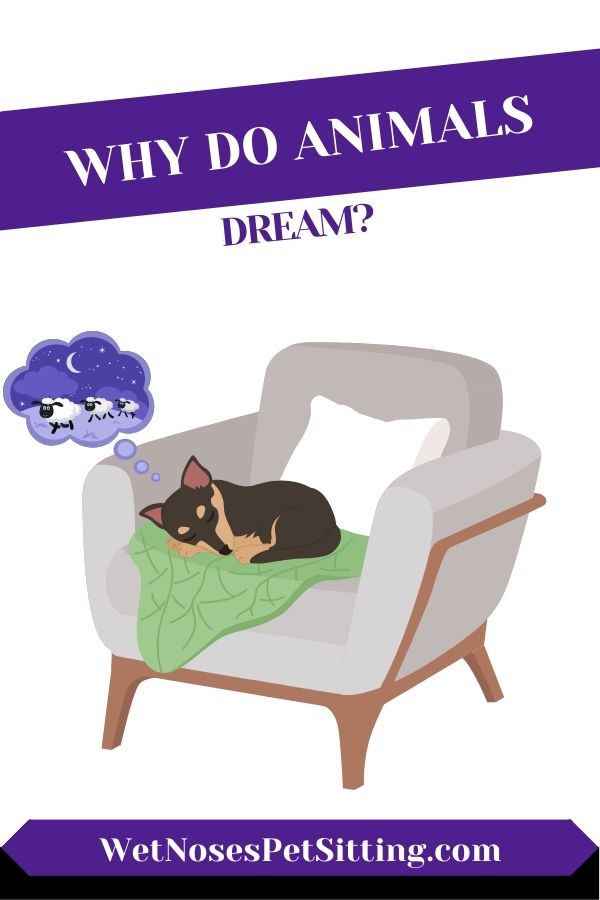Why do Animals Dream?
Why do Animals Dream?
Have you ever wondered if animals dream? Do they experience vivid adventures and imaginative scenarios while they sleep, just like humans? The realm of animal dreams is a captivating subject that has intrigued scientists and animal lovers for centuries.
We probably all have observed our dogs as they sleep and we wonder as they whimper, growl and move their feet like they are chasing something. Even our kitty’s seem to dream, they suckle, knead and chirp while sleeping and we all agree it’s adorable! In this article, we will explore the intriguing question of why animals dream, shedding light on the mysterious inner lives of our fellow creatures.
Understanding Dreams
Dreams, defined as a series of thoughts, images, and sensations experienced during sleep, are a universal phenomenon among humans. They often serve as a gateway to our subconscious mind, allowing us to process emotions, memories, and experiences. But what about animals?
There is some pretty good scientific evidence that shows that many animals large and small, domestic and wild, have a dream state where they may be replaying that day’s events. We know that humans experience rapid eye movement sleep or REM. This is called the dream state and we are now seeing that animals have these REM cycles too. It is marked by rapid eye movement (REM) and studies have shown that there is a lot of electrical activity going on in the brain during this time.
Reptile, mammal, and bird brains have been studied while in the REM cycle and they show the same highlighted patterns in the brain as their human counterparts.
Interestingly enough, a 2015 study on rats showed that when the rats were shown food right before going to sleep, they seemed to map out how to get to the food in their sleep!
One of the more interesting subjects to observe sleeping is the octopus. It is fascinating to watch this clip of the many color changes while the octopus rests. Whales, porpoises, and dolphins show evidence of REM sleep as well. They have the ability to put half of their brain to sleep while the other half stays awake monitoring their breathing and awareness of their surroundings.
It appears that when animals dream they activate the area in the brain called the ‘Pons’ that in turn gets the ‘medulla’ going which inhibits neurons in the spine that cause a type of ‘paralysis’. In this way the sleeping animal doesn’t actually get up and chase a squirrel, it would seem though, that not all the neurons are blocked, and that is what we see in the movements and vocalization they perform while sleeping.
It is interesting to note that big dogs dream longer but less frequently than small dogs, who have shorter but more dreams during their sleep time. Puppies and kittens have more dream periods than the adults and scientists believe it is helping their young brains by building neuron pathways. Deep sleep is vital to overall health. Animals and humans who are not getting enough REM sleep have shown a higher incidence of physical and psychological disorders.
What do animals dream about?
There isn’t any way to prove what animals dream about. However, of the millions of pet parents worldwide who can attest to observing their pet dreaming it would seem that our pets and animals in general dream about what is important to them.
Horses have been observed running, dogs bark, whine and make digging motions. Cats are observed hissing, purring and suckling. Birds are observed singing in their dreams. And as mentioned above rats are devising ways in their dreams of getting to the food!
Why do animals dream?
Most researchers would agree that dreams are a very important part of learning and development. It seems to help the dreamer understand the world around them and how they function in it. While the exact purpose of animal dreams remains a topic of ongoing research, several theories have emerged to explain their significance.
Memory Consolidation: Dreaming may play a crucial role in memory consolidation for animals. During sleep, the brain processes and organizes newly acquired information, strengthening neural connections and enhancing learning. Dreams could provide a means for animals to reinforce important experiences, fine-tune their skills, and adapt to their environment effectively.
Emotional Regulation: Dreaming might also serve as a mechanism for animals to regulate their emotions. Just as humans process and resolve emotional experiences during dreams, animals may use this state of sleep to cope with stressful or challenging situations they have encountered. Dreaming could help them process emotions, reducing anxiety and promoting emotional well-being.
Survival Skills Development: Animal dreams may contribute to the development and refinement of survival skills. For example, a predator may rehearse hunting techniques or anticipate potential threats during dreams, enhancing its ability to survive in the wild. Similarly, prey animals might simulate escape scenarios, preparing themselves for real-life dangers they may encounter.
Brain Development and Adaptation: Dreaming could play a crucial role in the development and adaptation of an animal’s brain. The formation of new neural connections and the rewiring of existing ones during dreams may contribute to cognitive development, problem-solving abilities, and overall brain plasticity.
Conclusion
Appreciating the inner lives of animals, including their dreams, fosters a deeper understanding and empathy for the diverse creatures that share our planet. The next time your pet sleeps you can smile at the sweet dreams they are having. Whether it is chasing a ball or going for that Frisbee, digging for that bone or chasing the butterfly this deep sleep will undoubtedly benefit your pet so let them rest and enjoy themselves.














